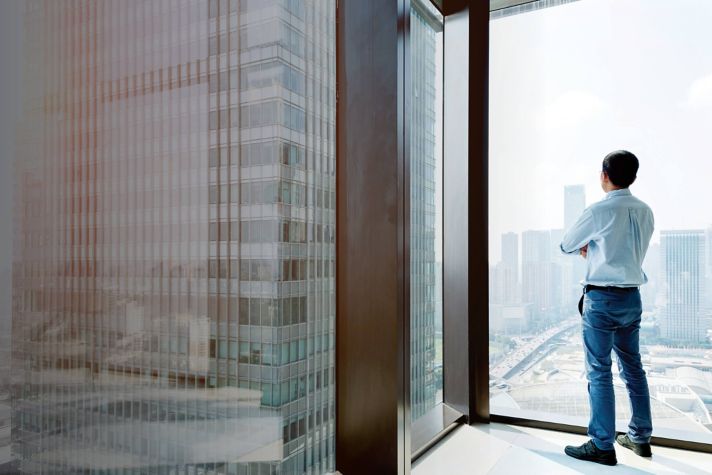You are browsing the product catalog for
- News
- How Your Air Travel Journey Will Change
The Future of Air Travel
Ready to book your next flight? Expect these changes on the journey
Travelers screened at airports by the Transportation Security Administration was down about 85% at the start of June, according to the U.S. Transportation Security Administration.
As the air travel industry recovers, we will need reassurance that it is safer to fly again.
“Post-September 11 we saw an incredible number of new design elements and new processes in airports,” said Debra Becker, a senior Honeywell sales leader who has more than two decades of experience in the buildings industry. “We’ll have similar changes to the design of airports and we’re seeing emerging process changes.”
Nearly 60% of travelers surveyed said social distancing is among their top priorities during travel, according to an informal Honeywell survey of 700 business and personal travelers.
Meanwhile, nearly half said that personal protection equipment, such as masks, are also among top priorities.
Here is what to anticipate the next time you fly:
Check-in changes: Pre-screening and airport air quality
Why it matters: You could be required to answer health screening assessments when you check in for a flight, before accessing your boarding pass. In addition, technology could be used to reassure passengers by giving them real-time air quality information before they head to the airport.
Airport changes: Thermal imaging screening and plexiglass
Why it matters: Changes throughout the airport can help enforce social distancing and keep travelers safer. In many cases, masks may be mandatory. When you enter the airport, you may pass by thermal imaging cameras that scan for travelers who may have an elevated temperature and need additional assessment. There, the air pressure may be monitored to help reduce the spread of certain germs. Meanwhile, employees at desks will likely be behind plexiglass. Other changes may include social distancing while boarding the plane, with some airlines boarding starting with those who are seated in the back and others leaving middle seats unoccupied.
Airplane Changes: Ultraviolet cleaning and improved in-flight air quality
Why it matters: Masks will likely continue to be part of the norm as part of the crew’s uniform. You may also see reduced meal service and in cases of purchases, touchless technology to avoid passing cards back and forth. Technology can make a big difference in helping keep a plane’s surfaces cleaner. The Honeywell Ultraviolet Cabin System can traverse an aircraft cabin in less than 10 minutes. It is about the size of a beverage cart and features extendable arms outfitted with UV-C lights that can reduce certain bacteria and virus on cabin surfaces. Behind the scenes, airlines could use predictive maintenance in the plane’s air conditioning system to monitor and improve air circulation.
Arrival changes: More cleaning and social distancing
Why it matters: As you de-plane, you could see cleaning measures start taking place for the next flight. Similar measures that took place before you arrived at the departure airport may also be implemented. That can include the prescreening and temperature readings. Monitoring air quality of the arrival airport can also reassure passengers by giving them real-time visibility into the air circulation data.
Some product concepts may be under development. No testing has been done specifically as to protection against COVID-19. As with all of our products and services, Honeywell will adhere to its commitment to integrity and compliance within its global supply chain; meet relevant legal, scientific and industry standards; substantiate claims; and obtain necessary regulatory approvals as products progress through the development process. Honeywell ThermoRebellion™ has not been FDA approved.
Copyright © 2025 Honeywell International Inc.






